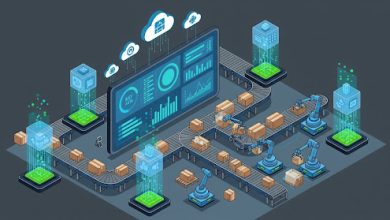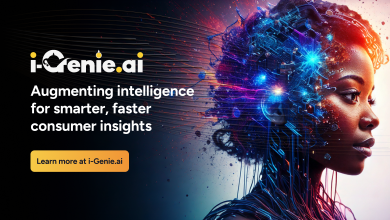
Artificial Intelligence (AI) is completely reshaping society; from bridging communication gaps across cultures and languages with AI-powered translation to revolutionising healthcare by improving diagnostics through image recognition. According to a survey by McKinsey & Company, around 80% of executives believe that their companies could achieve a competitive advantage through the implementation of AI technologies, so it is not surprising that the adoption of AI has tripled in the last year within organisations across all industries.
However, AI cannot automatically add value and make a meaningful difference just because it has been implemented within an organisation or team. One must consider how much AI-driven platforms are reliant on human intervention at specific contact points to ascertain how effective AI truly is when implemented into an organisation. It is therefore important to explore how the combination of human intelligence and artificial intelligence at the right times can unlock AI’s true potential and implementation value.
When AI Goes Wrong
AI can undoubtedly benefit businesses in many ways through, for instance, the automation of administrative tasks. However, to reap the full benefits of AI, organisations must implement it efficiently and effectively. If not, AI may not meet the high expectations that businesses may have.
When AI is implemented inefficiently into business operations, it prevents them from gaining real value from AI. For instance, according to a survey conducted by IDC, 70%of AI projects fail to deliver, often due to an untrained workforce and insufficient comprehension of AI technologies. Additionally, according to a report by Gartner in 2020, around 85% of AI projects were expected to fail due to a lack of clear objectives, poor data quality, and insufficient stakeholder alignment. This high failure rate highlights the pitfalls associated with implementing AI into business, and how many organisations struggle to effectively integrate AI solutions into their operations, often resulting in wasted resources and missed opportunities for efficiency gains.
The workforce needs to be properly trained and on-boarded onto AI to gain the most value from it. AI also must be implemented at the correct place, and at the correct time, so that AI and humans can work together efficiently.
If we focus on the example of AI-powered translation, many organisations – particularly within complex industries such as pharmaceutical, financial, and legal – would greatly benefit from AI to translate large volumes of content and quickly turn around advisory literature on patient guidance. However, since AI translation is not 100% accurate, this output also requires human review from qualified language specialists with subject-matter expertise.
With the above in mind, it is clear that this post-editing stage remains the critical gap between AI-translation output and translation that is trustworthy and fit for purpose, specifically for complex industries such as pharmaceutical, legal, or financial services. It is therefore important for humans to teach and train AI during the process, rather than at the review output stage.
Considering Alternative Tools
To see success from AI, business executives need to implement AI solutions that combine artificial intelligence and human intelligence. Doing this at the correct time and place can help increase both efficiency and accuracy and speed up the process. This creates an output for the business which is built on genuine intelligence. This is a synergistic combination of artificial intelligence and human intelligence, instead of curtailing when they can bounce off one another. With this approach, AI is continually learning and adapting to the context it is exposed to, which has been selected and updated by human experts.
In the context of the AI translation example above within the pharmaceutical industry, if an organisation uses a tool that has been efficiently and effectively implemented and built with genuine intelligence in mind, language specialists would only be needed at the most critical points to teach and train AI, and then fine-tune the final output. This means that the translation executed for the organisation can still be 100% accurate while elevating the all-important human role.
So, what are the advantages for businesses?
Such pioneering platforms based on genuine intelligence, that aim to elevate the role of the human worker rather than replace them greatly benefit businesses, particularly when it comes to AI-translation. In a world where there is a growing fear of AI ‘stealing jobs,’ there is more of a need to emphasise how humans and AI can collaborate to increase efficiency, rather than replace them.
For instance, in AI translation, such tools achieve human-like translation, almost instantly, significantly reducing the time required for a human during the translation process. This means that language specialists can put their energy towards more interesting and important tasks, and apply their cultural expertise to content that truly deserves their focus.
With genuine intelligence, AI can get closer to becoming a ‘magic fix’ that solves complex business challenges and improves the efficiency of business operations. Such tools based on genuine intelligence can likewise create accurate content, elevate human productivity, and enable humans to put their attention towards the work they truly excel at and enjoy.




